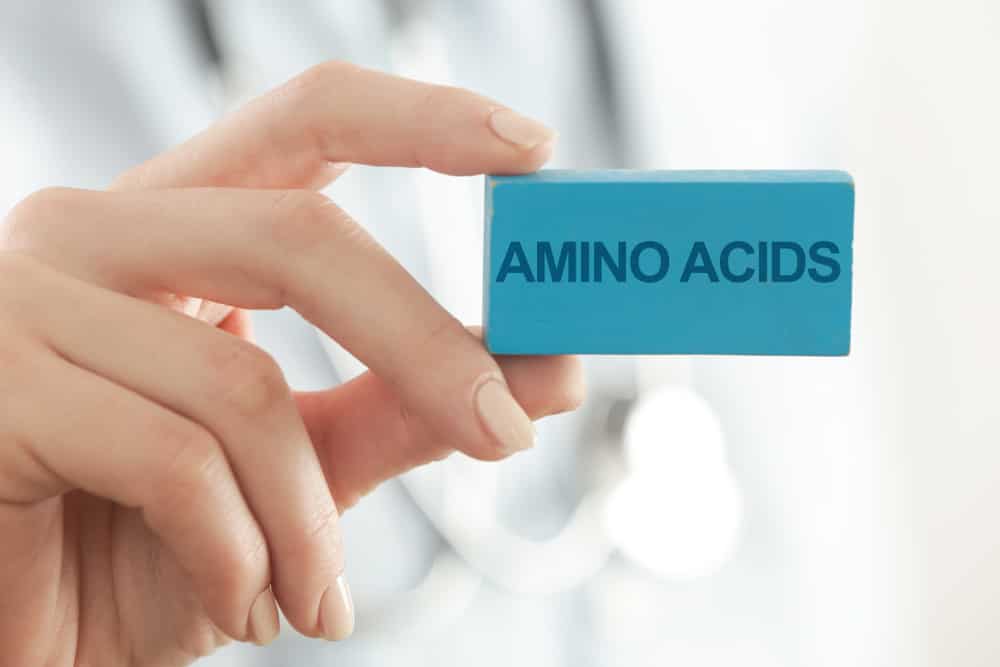The building blocks of our world are complex, vast, and very small. Proteins are one of the most vital parts of life and remain valuable keys to understanding anatomy. But what are proteins made of? Monomers and polymers, of course!
While proteins are building blocks of life, they’re not the smallest the anatomy of the world gets. Proteins are made of amino acids — monomers. Monomers join together to create polymers, or “macromolecules.”
So, if you’re learning about monomers and polymers, discover some of the top things to know about these tiny structures — as well as how to remember monomers and polymers for tests, professional settings, and more.
Understanding Monomers

All amino acids are monomers because they have one unit.
©triocean/Shutterstock.com
Did you know that “mono” stands for “one?” This is evident in many words that have “mono” as a prefix, including:
- Monologue.
- Monogamous.
- Monochrome.
- Monocle.
- Monorail.
Monomers are singular units that can combine with each other to create a chain. In protein, these are called amino acids—and amino acids combine in chains to compose proteins. In addition, fats and carbohydrates have monomers.
Essential amino acids are those that the human body cannot synthesize on its own and must be obtained through dietary sources. They include histidine, isoleucine, leucine, lysine, methionine, phenylalanine, threonine, tryptophan, and valine.
Comparatively, nonessential amino acids can be synthesized by the human body and are not required to be consumed through diet. These include alanine, arginine, asparagine, aspartic acid, cysteine, glutamic acid, glutamine, glycine, proline, serine, and tyrosine. Additionally, it’s important to note that although nonessential amino acids are considered nonessential, they still play crucial roles in various physiological processes.
The 20 Amino Acids and Their Unique Characteristics
Listed in alphabetical order, the following are the amino acids that exist. Learn their abbreviation, polarization, size, structure, and function.
- Alanine (Ala): Nonpolar, small side chain, involved in protein structure and metabolism.
- Arginine (Arg): Positively charged, basic, involved in protein synthesis and signaling.
- Asparagine (Asn): Polar, involved in protein synthesis and glycosylation.
- Aspartic acid (Asp): Negatively charged, acidic, involved in protein synthesis and signaling.
- Cysteine (Cys): Polar, contains a sulfhydryl group, involved in protein folding and disulfide bond formation.
- Glutamic acid (Glu): Negatively charged, acidic, involved in protein synthesis and signaling.
- Glutamine (Gln): Polar, involved in protein synthesis and nitrogen transport.
- Glycine (Gly): Nonpolar, smallest amino acid, flexible, involved in protein structure and neurotransmission.
- Histidine (His): Positively charged, basic, involved in protein structure, enzymatic reactions, and pH regulation.
- Isoleucine (Ile): Nonpolar, branched-chain amino acid, involved in protein synthesis and metabolism.
- Leucine (Leu): Nonpolar, branched-chain amino acid, involved in protein synthesis and metabolism.
- Lysine (Lys): Positively charged, basic, involved in protein synthesis, enzymatic reactions, and signaling.
- Methionine (Met): Nonpolar, contains a sulfur atom, involved in protein synthesis and metabolism.
- Phenylalanine (Phe): Nonpolar, aromatic, involved in protein synthesis and neurotransmitter synthesis.
- Proline (Pro): Nonpolar, cyclic structure, involved in protein structure and collagen synthesis.
- Serine (Ser): Polar, involved in protein synthesis, phosphorylation, and enzymatic reactions.
- Threonine (Thr): Polar, involved in protein synthesis, phosphorylation, and metabolism.
- Tryptophan (Trp): Nonpolar, aromatic, involved in protein synthesis and neurotransmitter synthesis.
- Tyrosine (Tyr): Polar, aromatic, involved in protein synthesis, signaling, and neurotransmitter synthesis.
- Valine (Val): Nonpolar, branched-chain amino acid, involved in protein synthesis and metabolism.
Unraveling Polymers

Protein structures can misfold to create significant problems in a human body.
©Sergei Drozd/Shutterstock.com
All proteins are polymers because polymers, by definition, are chains consisting of repeating monomer patterns. Also known as peptides, a string of amino acids remains a polymer of protein. Polymers can combine hundreds or thousands of monomers (amino acids) to create proteins. Those proteins have a variety of jobs within organisms’ bodies, including acting as enzymes, antibodies, and structural proteins.
The polymer structure will determine a protein’s function by the sequence of amino acids it puts together and how it folds itself. The primary composition of the protein’s framework includes four individual protein units. These units, classified as quaternary, secondary, tertiary, and primary structures, have different use cases based on an organism’s need and the amino acid with which it interacts. These structures or fold patterns dictate what a protein becomes or functions as.
Furthermore, proteins can either fold into a functional shape or misfold to create inactive proteins. A misfold may cause degenerative and neurodegenerative disorders like Alzheimer’s, Parkinson’s, or Creutzfeldt-Jakob disease.
Tips for Remembering Protein Monomers and Polymers

Mnemonic phrases help students and professionals memorize lengthy terms, like all of the amino acids.
©dizain/Shutterstock.com
With the long words, dozens of amino acids, and many combinations of polymers, it’s hard to remember every piece of information. Fortunately, some memorization tactics and devices exist to make memorization and understanding easier.
GLAMP TVIP
The mnemonic represents the hydrophobic and nonpolar amino acids. Those included are:
- Glycine.
- Leucine.
- Alanine.
- Methionine.
- Phenylalanine.
- Tryptophan.
- Valine.
- Isoleucine.
- Proline.
His Lies Are Basic
Use this mnemonic for basic amino acids. The acids included here are:
- Histidine (H).
- Lysine (K).
- Arginine (R).
PVT TIM HaLL
To remember all the essential amino acids, students have come up with a mnemonic that lists all nine, with the inclusion of a tenth on special occasions.
PVT TIM HaLL stands for:
- Phenylalanine.
- Valine.
- Tryptophan.
- Threonine
- Isoleucine.
- Methionine
- Histidine.
- Arginine (which is only an essential amino acid in conditional situations).
- Leucine.
- Lysine.
Aromatic Mnemonic
Finally, use the mnemonic “PfTT,” like the onomatopoeia that you make with your mouth or nose since aromatic amino acids have a smell. These include:
- Phenylalanine.
- Tyrosine.
- Tryptophan.
Monomers and Polymers in Chemistry
The formation of protein starts with a monomer and builds into a polymer as structures grow. These serve as building blocks for all life on earth and remain vital information for STEM fields. As you continue in the fascinating world of proteins and their functions, remember to keep your mnemonic devices handy and add to your knowledge bank.
The photo featured at the top of this post is © Ground Picture/Shutterstock.com
Thank you for reading! Have some feedback for us? Contact the AZ Animals editorial team.







